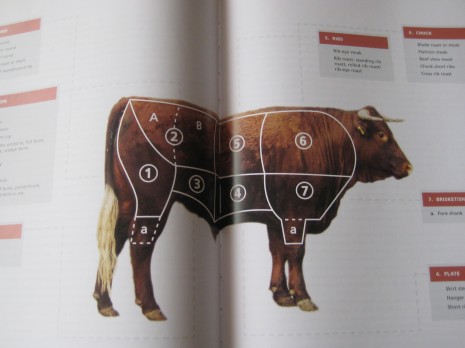LUXE FOR LESS: THE TOP BLADE STEAK
I’ve always worked better on deadline—thrived under the pressure, in fact—which is why I found myself racing around on May 21 as though I actually took stock in all of the end-of-the-world predictions. If only I’d planned better, I told myself, we could have had a fabulous cocktail party. Deviled eggs. Melt-in-your-mouth cheese straws. Benne wafers, the savory kind. Dilly beans and carrots. Ham biscuits. James Beard’s onion sandwiches. Nina Simonds’s Hundred-Corner Shrimp Balls, one of the greatest hors d’oeuvre recipes ever published in the pages of Gourmet. Ever published, period. Crabmeat, lots and lots of it, maybe crab Mornay, served with toast points. Now, that’s my idea of rapture.
And it was so not going to happen.
After briefly flirting with the notion of spending $30 a pound for wild Copper River salmon—it was gorgeous—sanity prevailed. I moved on to the meat cases, stared at their contents, and half-listened to my Saturday-morning shopping comrade Kempy Minifie as she gabbed to the butcher. “Well, would you go see if there are any in the back?” she asked. “I really need them.” She stood on her toes so she could look him in the eye.
“What’s for dinner at your house?” I said. “I have to get something good. The clock is ticking.” Kempy cocked an eyebrow. “You know, the world. What if it is our last meal?” I rationalized. Kempy looked around to see if anyone else was within earshot. “Blade steaks,” she breathed. “They have some, but you have to ask.” The guy behind the counter handed her a well-wrapped solid little parcel and grinned at me. “There are three left,” he confided.
The boneless chuck top blade steak has numerous aliases—book, butler, or petite steak, for instance—but you’ll know it when you see it. The tidy oval, slightly larger than the palm of your hand, is bisected by a thin strip of inedible gristle, or cartilage. That may not be an appealing characteristic, but don’t let it deter you from enjoying a superb cut of meat, one in which deep, beefy flavor is coupled with extraordinary tenderness.
The texture is a revelation to anyone who presumes that all beef chuck requires long, slow cooking to bring out its unctuousness. Although most cuts from the chuck, or forequarter, of a steer (see #6 in the diagram below, from Hugh Fearnley-Whittingstall’s masterful River Cottage Meat Book) are tough—that part of the animal does most of the work—top blade steaks are beautifully tender. They come from the long, wide muscle that butchers call the flatiron steak, which happens to be the second-most tender cut of beef after the (vastly) more expensive tenderloin. Slice a flatiron steak crosswise, and you’ve got top blade steaks. At about seven bucks a pound, they might more accurately be labeled top-value steaks.
Dinner that night was pretty darned good. The steaks, which took just minutes under the broiler, needed no other embellishment than salt and pepper. I had cut the cartilaginous bit out of my steak before plating it; Sam preferred to leave his steak whole and simply ate around the gristle. In both cases, the meat juices wilted the jade-green tangle of wild watercress (a farmers market splurge) that sat underneath them. I’d originally had baked potatoes in mind, but found myself in a Gruyère frame of mind. Potato gratin it was.
Life is short, so it’s worth eating well. The dishes will be there in the morning.
Posted: May 24th, 2011 under cooking, food, recipes, spring.



